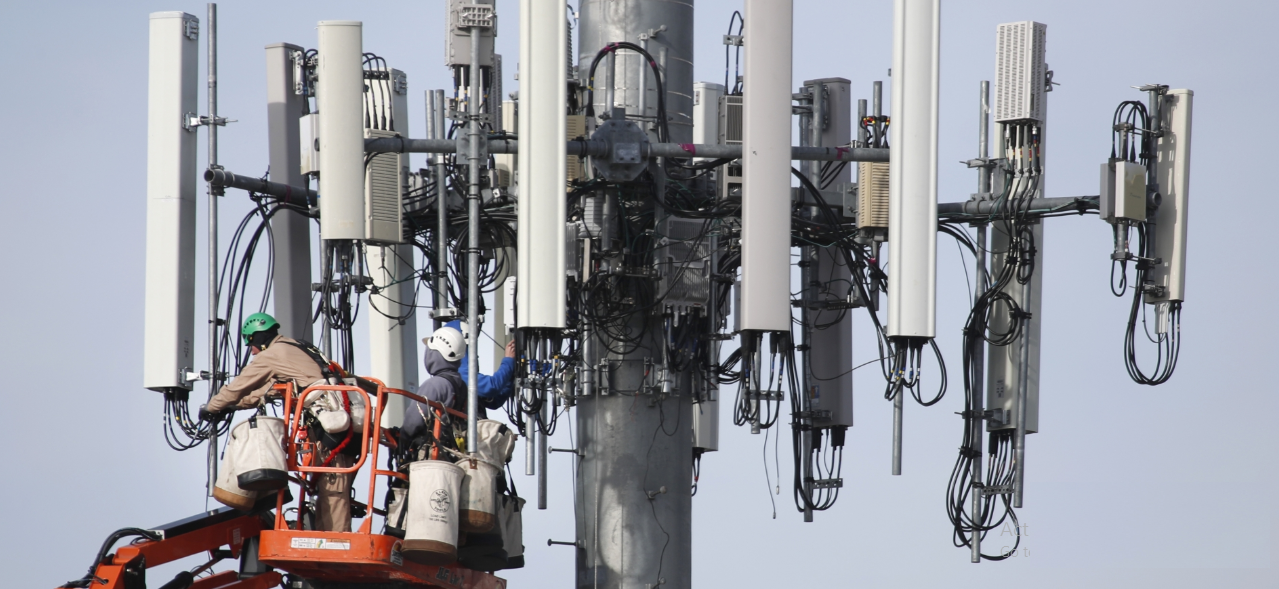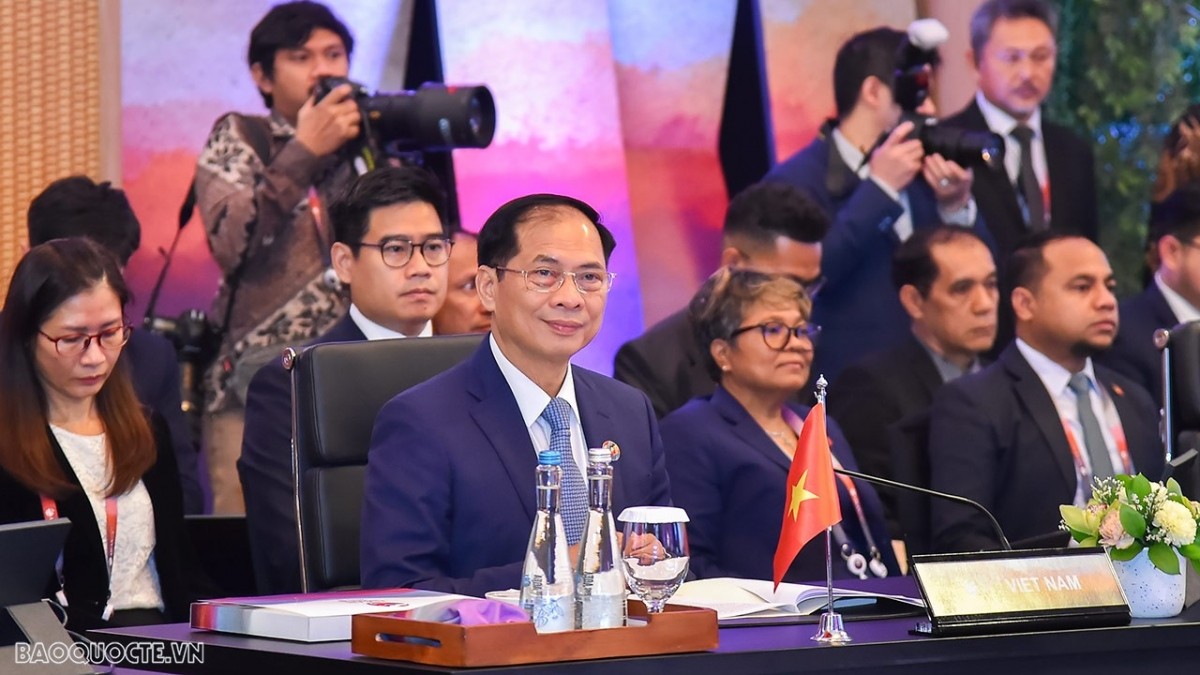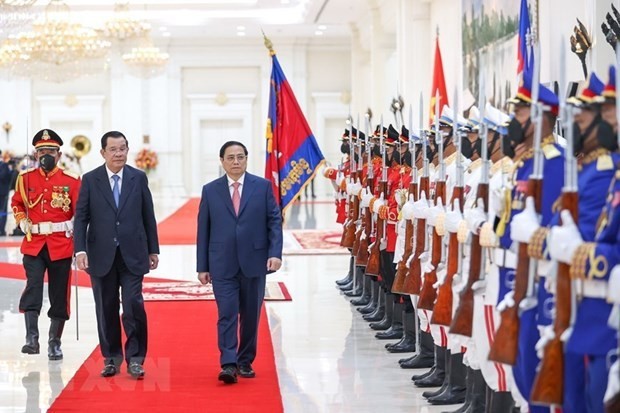National Strategy draft: Vietnam targets to expand 5G coverage nationwide by 2030
| Coronavirus was created by 5G networks: Absolutely no credible link between the two | |
| Vietnam carrier tests budget 5G in 4 SE Asia countries | |
| First 5G network broadcasts in Vietnam |
 |
| Illustration photo |
It was reported by Mic.gov.vn that Party General Secretary and President Nguyen Phu Trong last year signed Resolution 52-NQ/TW on behalf of the Politburo outlining guidelines and policies to actively participate in the FIR, which set a target of affordable nationwide 5G network coverage by 2030.
To realise this ambitious vision, the Government is planning to test fifth-generation mobile networks in major urban centres such as Hanoi and HCM City.
The Government has issued the first licence to test 5G for Viettel, the country's largest mobile operator, with more than 60 million subscribers in a country with a population of nearly 100 million.
In April 2019, Viettel said it had successfully tested a 5G broadcasting station in Hanoi at a speed of 600 to 700 Mbps, on a par with Verizon's network in the US.
Other mobile carriers including MobiFone and Vinaphone are also expected to launch their own 5G networks next year.
MobiFone has received a licence to become the second operator to conduct 5G network testing.
Notably, Viettel claimed that it had developed its own core technologies for 5G networks, including chips and devices. In fact, the group said it was aiming to produce 80 percent of the core network infrastructure needed for the network this year. The rest would come from outside suppliers.
MobiFone has chosen to go with Samsung technology, while Vinaphone is cooperating with Nokia.
In the process of Vietnam deploying 5G, many leading technology corporations in the world have expressed their interest in working closely with the Government, carriers, and private enterprises to help the country properly implement its 5G coverage plan and commercialise the technology this year.
5G technology would bring a new economy, helping the country create a series of new products for smart cities, said the Vietnam Telecommunications Authority (VNTA) under the Ministry of Information and Communications.
In the first phase of 5G technology, many Vietnamese enterprises will focus their resources on producing 5G chipset processors. These are considered the "heart" of 5G technology.
Although there have been proactive steps in deploying a 5G network, analysts said the road ahead for Vietnamese carriers is full of challenges and opportunities.
The number of 5G subscribers in Vietnam is expected to reach 6.3 million by 2025, according to a 5G development report published by Cisco in October.
By deploying 5G services, Vietnamese telecom companies could raise their revenue by up to 300 million USD each year from 2025, it noted.
However, Vietnamese mobile service providers would have to invest 1.5-2.5 billion USD in infrastructure development from 2020-25 to launch and operate 5G services, the report said.
Cisco suggested Vietnam and Southeast Asian countries need to address the release of a slow frequency spectrum for 5G services while carriers need to introduce 5G services with appropriate prices to encourage users to move to higher speeds.
The following is key content of the draft strategy, VGP informed
According to Boston Consulting Group (BCG), the Vietnamese economy may be able to reap significant benefits if the nation could makes use of the 4th Industrial Revolution. Specifically, the country’s GDP may rise by US$28.5-62.1 billion by 2030 depending on the level of technology put into use by businesses, or equipvalent to an increase of between 7-16% of the GDP.
The 4th Industrial Revolution is likely to generate from 1.3 to 3.1 million jobs though it may change job structure in the national economy. By 2030, productivity/GDP may increased by US$315-640.
The Party and the State have introduced a number of policies and programs to facilitate the country’s participation in the 4th Industrial Revolution, which lay focus on application and development of science and technology, innovation, improvement of the quality of human resources.
They include Resolution No. 23-NQ/TW dated March 22, 2019 of the Political Bureau on policy-making orientations for national industrial development by 2030 with a vision to 2045; Resolution No. 52-NQ/TW dated on September 27, 2019 of the Political Bureau on some guidelines and policies for active participation in the 4th Industrial Revolution; and Decision No. 999 dated August 12, 2019 of the Prime Minister approving the project on promoting sharing economy model.
Under the Resolution No. 52-NQ/TW, the Government is assigned to issue the National Strategy for 4th Industria Revolution.
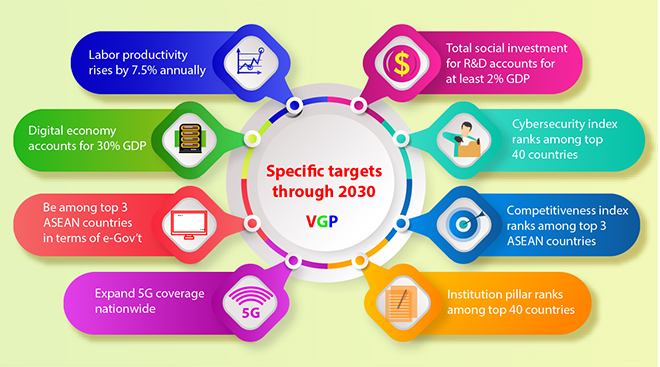 |
| The Ministry of Planning and Investment envisages specific targets. |
Viewpoints, Targets
1. Viewpoints
- Improve public awareness of the 4th Industria Revolution. Timely grasp and effectively harness opportunities from the 4th Industrial Revolution in order to increase productivity, effectiveness and competitiveness of the economy through research, transfer and application of the advances of the 4th Industrial Revolution in various socio-economic areas. Simutaneously, stay active in preventing and coping with negative impacts of the 4th Industrial Revolution to ensure national defense, security, safety, social equality and sustainability throughout the cause of national development.
- Implement the 4th Industrial Revolution through: (i) accelerating research and development and application of technologies in businesses and State governance, considering development of digital Government a breakthrough; (ii) considering education of high-quality workforce, research and taking command of several technologies as core factors; (iii) considering reform and improvement of economic institutions and cyber security and safety as premises.
- Apply Industry 4.0 technologies in e-Government development towards formulation of a digital Government for smarter, faster, more transparent, more effective governance; reduce operational costs as well as time for policy-making; improve effectiveness of supervising the enforcement of laws and policies to better serve people and businesses.
- Application of Industry 4.0 technologies to upgrade and transform the existing business and production systems in orer to optimize resource allocation, facilitate fast development of new products and services, and heighten productivity of businesses in particular and the whole economy in general.
2. Specific targets
By 2025:
- Improve the quality of institutional environment, speed up innovation and application of science and technology:
+ Maintain its position in the top three ASEAN countries in the Global Innovation Index rankings of the World Intellectual Property Organisation (WIPO);
+ The institution pillar is expected to rank among top 60 countries on the Global Competitiveness Index rankings of the World Economic Forum;
+ The cybersecurity is expected to rank among top 40 countries in the Global Cybersecurity Index rankings of the International Telecommunication Union;
- Improve the capacity of research and innovation of businesses and the economy towards mastering some of major technologies
+ The innovation pillar is expected to rank among top 50 countries on the WEF Global Competitiveness Index rankings;
+ At least 20% of total businesses apply at least one of Industry 4.0 technologies. In priorities industries, the figure is expected to reach at least 30%;
- Digital economy is projected to account for around 20% GDP; average productivity is expected to increase by over 7% annually. Total social investment for research and development is expected to account for at least 1.5% GDP.
- Development of qualified workforce
+ Skills pillar is expected to rank among 60 top countries on WEF Global Competitiveness Index rankings;
- Complete development of e-Government, towards formulation of digital Government
+ Become one of top 4 ASEAN countries on the United Nations’ e-Government rankings;
+ Broadband internet covers 100% communes; 100% State agencies complete digital transformation and provide level-4 online public services;
+ Have at least three smart cities across the nation;
By 2030:
- Improve the quality of institutional environment, speed up innovation and application of science and technology
+ Maintain its position in the top three ASEAN countries in the Global Innovation Index rankings of the World Intellectual Property Organisation (WIPO).
+ The institution pillar is expected to rank among top 40 countries on the Global Competitiveness Index rankings of the World Economic Forum;
+ The cybersecurity is expected to rank among top 30 countries in the Global Cybersecurity Index rankings of the International Telecommunication Union;
- Improve the capacity of research and innovation of businesses and the economy towards mastering some of major technologies
+ The innovation pillar is expected to rank among top 40 countries on the WEF Global Competitiveness Index rankings;
- Digital economy is expected to account for around 30% GDP; average productivity is expected to increase by over 7.5% annually. Total social investment for research and development is expected to account for at least 2% GDP;
- Development of qualified workforce
+ Skills pillar is expected to rank among 40 top countries on WEF Global Competitiveness Index rankings;
- Complete development of digital Government, improve digital infrastructure
+ Become one of top 3 ASEAN countries on the United Nations’ e-Government rankings
+ Expand 5G coverage nationwide.
 | Vingroup in deal with Fujitsu unit, Qualcomm to make 5G phones Vingroup JSC, Vietnam's biggest-listed firm by market value, said on Friday it had signed a deal with Qualcomm and a unit of Japan's Fujitsu Ltd ... |
 | Viettel makes very first 5G phone call in Vietnam The first 5G phone call in Vietnam was made Friday on the network of Viettel, the country’s largest telecommunications company. |
 | Nikkei: Vietnam's top telecom to adopt 'self-developed' 5G tech Viettel Group, Vietnam's largest mobile telecom operator, intends to use its own core technology to build a fifth-generation network as the state-owned company prepares to ... |
Recommended
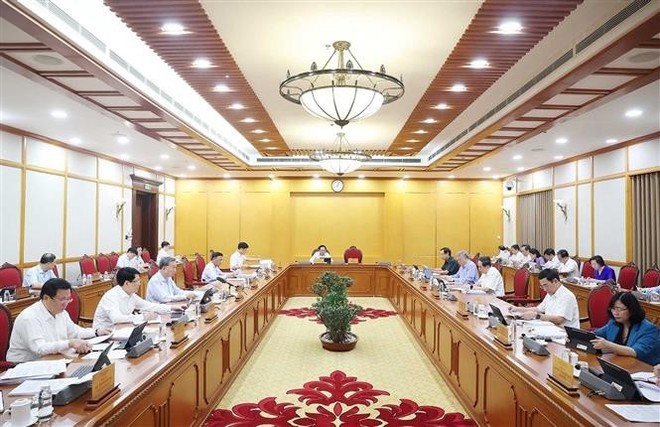 National
National
Vietnam News Today (Jun. 7): Prime Minister works with Estonian firms to accelerate projects in Vietnam
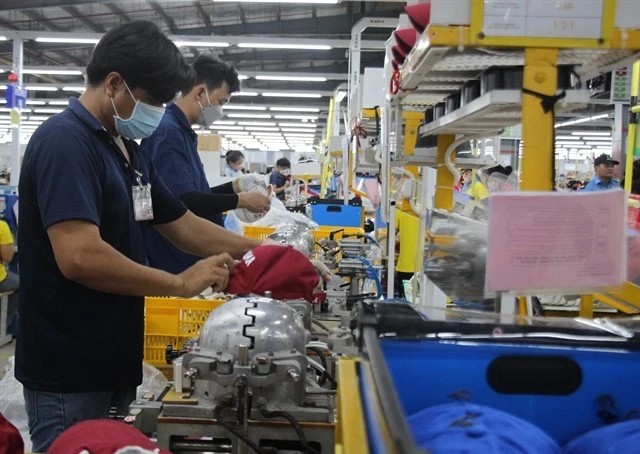 National
National
Vietnam News Today (Jun. 6): Foreign Investment in Vietnam Surges in Five Months
 National
National
Vietnam News Today (Jun. 5): PM sets off for attendance at UNOC 3 in France, official visits to Estonia, Sweden
 National
National
Vietnam News Today (Jun. 4): Vietnam - Promising Candidate for Southeast Asia’s Next Powerhouse
Popular article
 National
National
Shangri-La Dialogue 22: Vietnam Highlights Some Issues of Ensuring Stability in a Competitive World
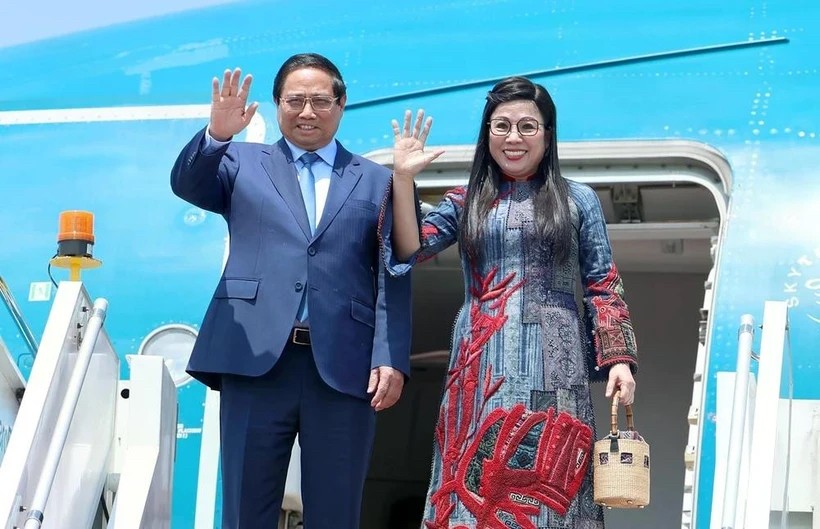 National
National
Vietnam News Today (Jun. 3): PM Pham Minh Chinh to Attend UN Ocean Conference, Visit Estonia, Sweden
 National
National
Vietnam News Today (Jun. 2): Vietnamese Trade Mission Sounds Out Business Opportunities in United States
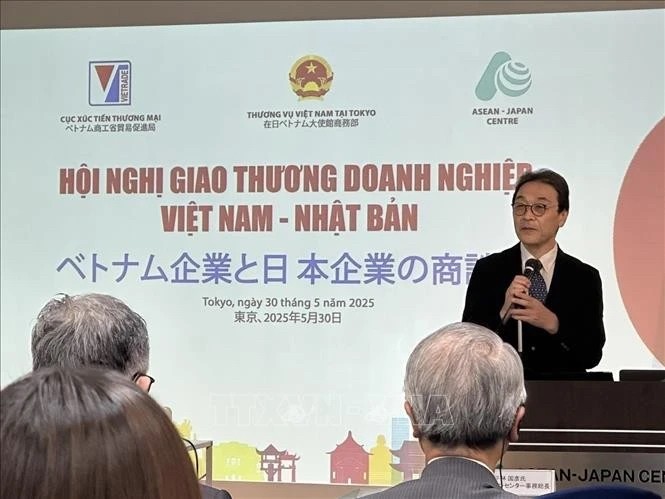 National
National

